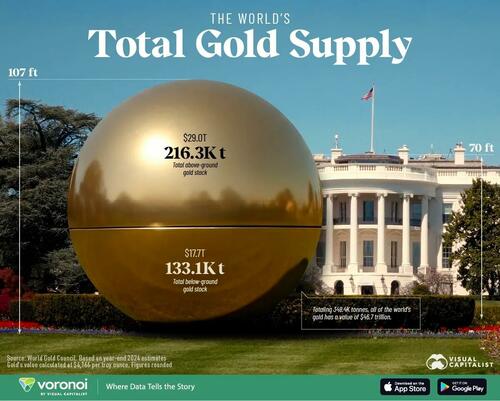Last week, the UK became the latest country to announce a national semiconductor plan. The UK National Semiconductor Strategy plans to double down on advanced chip leadership and research and development (R&D), and facilitate greater international cooperation in a ‘friend-shoring’ initiative, particularly with Japan. In the meantime, Tokyo has announced a major plan with seven chip manufacturers including TSMC, Samsung, Micron and Intel to re-establish its strength in advanced semiconductor manufacturing. One of those initiatives with Micron envisages a plant to produce cutting-edge extreme ultraviolet (EUV) lithography technology in Hiroshima.
Bipartisan support in the US legislature resulted in the CHIPS and Science Act in 2022, meant to boost American semiconductor R&D as well as production. The Act incentivizes leading American chip-design firms like Qualcomm to manufacture their chips in the US. It established a coordinated permitting mechanism balancing environmental, commercial and tax considerations supported by Federal subsidies and guarantees. Like the US moon project in the 1960s, the Act sets up grand challenges to build the first “zettascale” supercomputer, which would operate 1,000 times faster than the fastest supercomputers available today. The CHIPS Act provides $53 billion, $39 billion of which is for manufacturing and $13 billion for R&D and workforce development.
Alarmed by quick developments, the EU has announced a draft chips act which seeks to create a state-of-the-art European chip ecosystem for R&D, design, manufacturing, packaging and testing. Europe has one major advantage in that the world’s leading photo-lithographic company, ASML, which uses EUV technology to build the super complex machines that are fundamental to the mass production of chips, is based in Amsterdam and listed on Euronext (as well as on Nasdaq).
India’s Semiconductor Mission (ISM) aims to build a vibrant semiconductor and display ecosystem to enable India’s emergence as a global hub for electronics manufacturing and design. India’s production linked incentive scheme (PLI) has catalysed fast movement in the assembly of some high-end mobile phones. Much progress remains to be made in the earlier parts of the R&D, design and manufacturing stages and the broadening of assembly lines to servers, telecom boards and laptops.
The flurry of activity and the urgency of the efforts is, of course, arising because of extreme uncertainty around China’s actions over Taiwan, which is home to TSMC, the maker of a significant majority of the world’s most advanced computer chips. TSMC is already building a facility in Arizona, US, and has been under pressure to build in Europe, Singapore and on the Chinese mainland as well.
Paradoxically, as TSMC builds outside its home base in Taiwan, it risks ceding the country’s ‘silicon shield’, increasing the probability of Chinese action. China has also sharpened its semiconductor strategy by focusing its $143 billion five-year plan on advanced manufacturing at a few companies like SMIC and Huawei.
The G-7 meeting just concluded in Hiroshima, Japan, has euphemistically picked the word “de-risking” over “decoupling”. The G-7 was joined by India, Indonesia, Vietnam, Brazil and the tiny island of Comoros. Exactly how countries on either side of the tech divide will strike a balance between geopolitical considerations and economic interests is unclear. While the US appears to be on a confrontational path with China, Japan, the EU and South Korea seek to walk a fine line between the two considerations. The cosy equilibrium in the semiconductor sector that the world had achieved over the last four decades is being subjected to rude change.
In an epic book called Chip War: The Fight for the World’s Most Critical Technology, Chris Miller traces the history of the semiconductor industry and the deep links between its origins in the US and its evolution into a global supply chain that is now being threatened. Korea produces 44% of all memory chips and 8% of all processor chips, Japan produces 17% of all chips, China produces 15% of chips (though currently low end) and Taiwan produces 41% of all processor chips and 90% of the most advanced chips. This geographic concentration around the South China Sea, is far from ideal for a world that is on the verge of a ‘decoupling’.
This is not a ‘war’ that India can swing both ways on. At the same time, given the degree of catch-up required and the huge amount of capital needed for fabrication, India faces a very challenging path ahead in this field. Vedanta and Foxconn have announced a partnership to build a chip manufacturing plant (or a ‘fab’). This fab aims to produce 40 nanometre (nm) and 28nm chips. While such chips are still in widespread use, the cutting edge of technology today at TSMC or Samsung is 2-3nm. TSMC first produced 28nm chips back in 2011. Notwithstanding the significant challenges in fabrication, India’s prospects in packaging, assembly and design are much better, since lead times are shorter and capital requirements lower. It is here that India must focus its incentives and workforce development.
P.S: “In a world that combines twin threats of nuclear weapons and artificial intelligence, the US and China represent the greatest dangers to peace,” said 100-year-old American diplomat Henry Kissinger.
Narayan Ramachandran is chairman, InKlude Labs. Read Narayan’s Mint columns at www.livemint.com/avisiblehand
Download The Mint News App to get Daily Market Updates.
More
Less
















